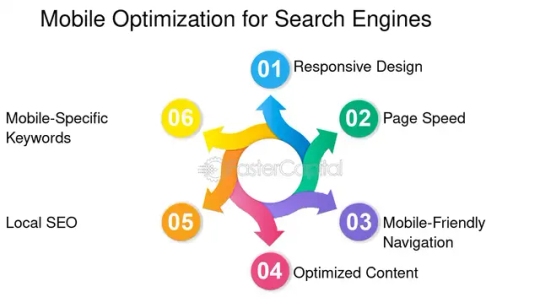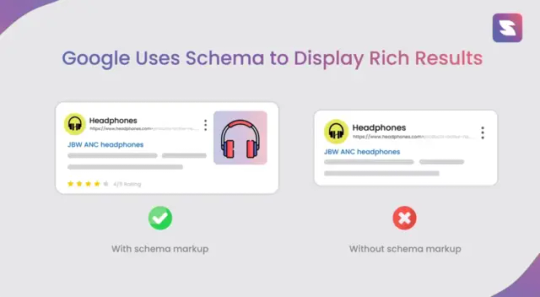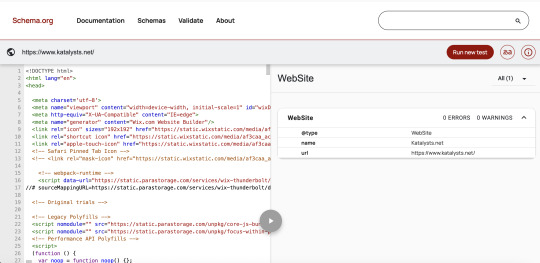#Schema markup
Explore tagged Tumblr posts
Text
10 Proven Local SEO Strategies To Lead Your Market In 2025
Have you ever, as a business owner, questioned why your competitors' websites rank highly in search results while yours does not?

If your business is local, the strength of local SEO is often the solution. In 2025, local search will be more important than ever for boosting traffic and conversions and ensuring that your business stands out in the rapidly growing digital market.
Think about this situation: A prospective customer finds your business at the top of the search results when they are looking for your service in their location. This is how local SEO functions! It allows you to increase foot traffic, build relationships with those in your immediate vicinity, and, most importantly, broaden the reach of your company.
10 tried and true local SEO tactics will be looked at in this post to help you dominate your industry in 2025.
1. Claim and Optimize Google My Business (GMB)

You're losing out if you're not making Google My Business more optimized. When local clients search for a company similar to yours, Google My Business is the first result they see. Verify your listing, claim the profile of the company, and include any important details, such as your location, services, hours, and contact information. To increase your chances of being found in local searches, use local keywords to optimize the description.
Keyword Suggestions: "Google My Business," "local business listing," "optimize GMB profile."
2. Pay Attention to Local Keywords
You need to optimize your content for local keywords if you wish to rank higher in local searches. These are the search terms that your prospective clients use to locate nearby goods or services. For example, a Los Angeles bakery may aim to provide "the most delicious cakes in Los Angeles." Incorporate location-based keywords into your blog, GMB listing, and website.
Keyword Suggestions: "best [service] in [location]," "top [business type] near me."
3. Gather Positive Customer Reviews

Reviews are more than just a way to boost your reputation; they play a major role in local search rankings. Positive reviews not only attract more customers but also signal to Google that your business is trustworthy and relevant. Encourage your clients to ask happy customers to leave reviews on platforms like Google, Yelp, and Facebook.Keyword Suggestions: "positive customer reviews," "get reviews for local businesses."
4. Provide Locally Relevant Content
Content marketing is the cornerstone of any successful local SEO strategy. Create videos, blog posts, or social media content targeted to the local audience. For example, write about events, news, or topics relevant to your client's location and industry. This will help your business establish a reputation as a local authority.
Keyword Suggestions: "local blog topics," "community engagement," "local content marketing."

5. Create Local References
Every internet reference to your business's name, address, and phone number (NAP) is referred to as a local citation. Your chances of ranking well in local search results increase with the consistency of your NAP information across different directories and websites. Make an effort to get listed in reputable local directories, such as the Yellow Pages and Yelp.
Keyword Suggestions: "local citations," "business directory listings," "NAP consistency."
6. Optimize for Mobile Searches

Your client's website needs to be mobile-friendly because more and more customers are using mobile devices to search for businesses. Mobile-friendly websites rank higher thanks to Google's mobile-first indexing. For a flawless mobile experience, make sure that the content is optimized, navigation is simple, and loading times are quick.
Keyword Suggestions: "mobile-friendly website," "optimize for mobile SEO."
7. Implement Local Structured Data Markup (Schema Markup)

One effective technique to aid search engines in understanding the business facts of your clients is to use schema markup. By adding structured data to a website, it facilitates search engines' display of pertinent local information in search results, such as the name, address, phone number, and reviews of nearby businesses. Local schema markup implementation can improve search result listings and raise exposure.
Keyword Suggestions: "structured data markup," "local schema markup," "enhanced search listings."
8. Use Location-Based Landing Pages

If your client has multiple locations or serves different neighborhoods, create dedicated landing pages for each. These pages should target the specific location, use local keywords, and include information relevant to the local audience, such as neighborhood events or local partnerships.
Keyword Suggestions: "location-specific landing pages," "neighborhood pages," and "local landing page SEO."
9. Leverage Social Media for Local Engagement

You may improve your local SEO efforts and interact with your local audience by using social media networks. Your clients can increase brand recognition and authority in their area by utilizing location tags, joining neighborhood groups, and taking part in community discussions. Additionally, search rankings may benefit from social signals.
Keyword suggestions: "local social media marketing," "social media engagement," and "location-based hashtags."
10. Monitor and Track Local SEO Performance

Finally, it's critical to track and evaluate the results of your local SEO activities regularly. To monitor traffic, conversions, and keyword rankings, use tools such as Google Analytics and Google Search Console. This will enable you to hone and enhance your approach for greater outcomes.
Keyword Suggestions: "Local SEO analytics," "track local rankings," and "monitor local SEO performance."
Concluding remarks
Local SEO will be a crucial component for companies hoping to thrive in their local marketplaces in 2025. These tactics will help you, as a freelancer assisting customers, increase their visibility, increase traffic, and expand their business. Your clients will dominate their industry, experience steady growth, and build a devoted clientele by adhering to these ten tried-and-true principles.
It's time to start implementing the strategies you have learned that will help you dominate local search.
Are you prepared to help your clients grow their businesses? Get in touch with us right now, and together, let's maximize local SEO's potential!
2 notes
·
View notes
Text

I’ve just published a new blog post that dives into the power of Schema Markup and how it can significantly enhance your website’s SEO efforts. If you’ve been looking for ways to boost your search engine visibility and improve your rankings, Schema is an often-overlooked tool that can make a huge difference. This, in turn, can result in your site showing up more prominently in search results with rich snippets, review stars, FAQs, and other enhanced features that attract more clicks.
In this post, I explain exactly what Schema is, why it’s crucial for modern SEO, and how it can improve user engagement on your site. I walk through the different types of Schema Markup—such as LocalBusiness, Product, Article, and FAQ—and give you actionable tips on how to implement each one effectively. Whether you’re running an e-commerce site, a local business, or a blog, Schema can make your content stand out and improve your search engine results page (SERP) presence. I also share some of the best tools and plugins to help you easily add Schema to your site without needing advanced technical skills. If you're serious about SEO and want to see real, measurable improvements, this guide is a must-read! You can check out the full post here, and I’d love to hear your thoughts or answer any questions you might have in the comments!
2 notes
·
View notes
Text
On-Page SEO: Simple Techniques to Boost Your Website 🚀
If you want to improve your website’s search rankings, on-page SEO is the place to start! Here are some quick and effective techniques to help optimize your pages for better visibility on search engines like Google:
1. Optimize Title Tags and Meta Descriptions
Your title tag should be clear, concise, and include your target keyword. Meta descriptions should briefly describe the content, attract clicks, and also include the main keyword. Think of these as your page’s first impression!
2. Use Keywords Strategically
Place your primary keyword in the first 100 words of your content. Use related keywords throughout the post, but avoid keyword stuffing—keep it natural! Keywords should also appear in headings (H1, H2, etc.) to help structure the content.
3. Internal Linking
Link to other relevant pages within your website. This helps users navigate and improves site structure, which search engines love! Plus, it keeps people on your site longer.
4. Optimize URLs
Keep URLs short and descriptive. Include your primary keyword, and avoid using unnecessary numbers or symbols. Clean URLs are more user-friendly and help search engines understand your content better.
5. Use Alt Text for Images
Always use descriptive alt text for images. It improves accessibility and helps search engines index your images, which can lead to more traffic.
6. Mobile-Friendliness
Your website should be responsive and work well on mobile devices. Search engines prioritize mobile-friendly sites, so make sure your content is easily readable on phones and tablets.
7. Improve Page Load Speed
Fast loading times are crucial for both user experience and SEO. Compress images, enable browser caching, and consider using a Content Delivery Network (CDN) to speed things up.
8. Quality Content
Content is king! Write valuable, well-researched content that answers questions or solves problems for your audience. Google favors longer, in-depth articles that provide genuine value.
9. Use Structured Data (Schema Markup)
Help search engines better understand your content by using schema markup. It enhances rich snippets, such as star ratings, prices, and FAQs, making your content stand out in search results.
We have implemented all the above techniques on this website.
2 notes
·
View notes
Text
#web design#website#web design india#website design#website design india#web designers#seo#seo expert#seo expert india#seo services#schema markup#structured data
3 notes
·
View notes
Text
What is FAQ schema markup? - IT Mindslab
In the ever-evolving landscape of search engine optimization (SEO), staying ahead of the curve is crucial. One tool that has gained prominence in recent years is FAQ schema markup. This structured data technique provides a means to enhance your website’s appearance in search results and improve the user experience by providing quick answers to common questions. In this article, we’ll dive into what FAQ schema markup is, how it works, its benefits, and how to implement it effectively.
For more information: What is faq schema markup? - IT Mindslab
What Is FAQ Schema Markup?
FAQ schema markup is a type of structured data that webmasters and SEO professionals can add to their web pages to help search engines understand the content better. It’s specifically designed to highlight frequently asked questions and their respective answers on a webpage. When implemented, search engines can display these questions and answers directly in search results, often in the form of a rich snippet.
How Does FAQ Schema Markup Work?
FAQ schema markup uses a standardized format that includes specific properties and values within your website’s HTML code. These properties inform search engines about the structure of your FAQ content. Here’s a basic breakdown of how it works:
Question: You mark up each frequently asked question on your webpage using the <question> property.
Answer: You associate each question with its corresponding answer using the <answer> property.
FAQPage: You encapsulate all your questions and answers within a <script> tag with the type attribute set to "application/ld+json". Inside this script, you define a structured JSON-LD object that specifies the content as an FAQPage.
Structured Data Testing: Before publishing your page, it’s essential to use Google’s Structured Data Testing Tool or other similar tools to validate your markup and ensure it’s error-free.
Benefits of FAQ Schema Markup
Enhanced Search Visibility: FAQ rich snippets stand out in search results, increasing click-through rates and visibility.
Improved User Experience: Users can quickly find answers to their questions without clicking through to your website, enhancing the user experience.
Authority and Trust: Google often selects pages with FAQ schema markup as featured snippets, positioning your content as an authoritative source.
Catering to Voice Search: FAQ markup aligns with voice search queries, making it more likely that your content will be selected as a voice search answer.
Mobile Optimization: Rich snippets are especially beneficial on mobile devices, where screen space is limited.
Implementing FAQ Schema Markup
To implement FAQ schema markup effectively, follow these steps:
Identify Relevant FAQs: Determine which frequently asked questions are relevant to the content on your page.
Write Clear Answers: Craft concise and informative answers that directly address the questions.
Add Markup Code: Insert the structured data markup within the HTML of your webpage.
Test Your Markup: Use Google’s Structured Data Testing Tool to ensure there are no errors in your markup.
Monitor Performance: Keep an eye on your search performance to gauge the impact of your FAQ schema markup.
Advanced Features and Properties
Multiple FAQs: You can mark up multiple sets of FAQs on a single page, allowing you to address various topics or sections comprehensively. Each FAQ section should be enclosed within its own <script> tag with the JSON-LD structured data.
Accordion Format: FAQ schema markup often complements accordion-style FAQ sections on webpages. When users click on a question, the corresponding answer expands, providing a seamless and interactive user experience.
Nested FAQs: You can create hierarchical FAQ structures with nested questions and answers, offering in-depth information on a specific topic. Nested FAQs use the same properties (<question> and <answer>) within the JSON-LD structured data.
For more information: What is faq schema markup? - IT Mindslab
3 notes
·
View notes
Text
How Can I Improve The Visibility Of My Category Pages?
Boost your website traffic by optimizing your category pages for SEO. Learn proven strategies to improve visibility, increase rankings, and enhance user experience. How Can I Improve the Visibility of My Category Pages? Category pages play a crucial role in organizing website content, improving user navigation, and enhancing SEO performance. Whether you’re running an e-commerce store, a blog,…
#category page content#category page SEO#e-commerce SEO#improve category page visibility#improve website visibility#internal linking SEO#mobile SEO#optimize category pages#schema markup#SEO best practices#SEO for category pages#SEO keywords#SEO meta tags#SEO tips for category pages#structured data
0 notes
Text
Schema Markup for Business Growth
Schema markup is more than an SEO tactic—it’s a powerful growth strategy that can transform your website’s visibility and support AI initiatives. When implemented at scale, schema markup enhances search engine understanding, improves search visibility, and drives long-term business growth. But achieving these benefits requires a clear, strategic approach. If you’ve never implemented Schema…
0 notes
Text
0 notes
Text
6 Schema Markup Mistakes Hurting Your Local SEO (And How to Fix Them)

If you’re running a local business in Singapore: be it a hipster café in Tiong Bahru, a dental clinic in Bedok or a law firm in Raffles Place, your digital visibility isn’t just about having a website. It’s about getting found. That’s where Schema Markup (or structured data) becomes your secret SEO weapon.
But here’s the kicker: most SMEs in Singapore either don't use schema at all or they unknowingly implement it incorrectly. This means wasted SEO opportunities, less visibility on Google SERPs (Search Engine Results Pages) and ultimately, fewer customers walking through your doors.
Let’s break down the six most common schema markup mistakes that might be quietly sabotaging your local SEO in Singapore and how you can fix them fast.
1. Not Implementing Local Business Schema at All
This one’s a bit passe, but it happens more than you think.
Local Business schema tells Google key info about your business- name, address, phone number, opening hours and more. If you haven’t implemented it, you're essentially not telling Google who you are and what you do. That's a tall order SEO blunder in a local context like Singapore, where Google prioritises relevance and proximity.
Pro-Tip:
Use Google’s Structured Data Markup Helper to generate basic schema in JSON-LD format. Plug it into your <header> section or via Google Tag Manager.
2. Using the Wrong Schema Type
A local bubble tea shop using "Corporation" instead of "Local Business"? That's like listing your hawker stall as a multinational conglomerate- a major mismatch.
Singapore's business landscape is diverse. There are over 280 types of schema available. Choosing the wrong one affects how Google interprets your business and can hurt how you appear in relevant searches.
Here's a Quick Fact:
According to Moz, businesses that use specific schema types see up to 30% more rich results in SERPs compared to those using generic ones.
So here's what you need to do. Head over to schema.org and find the most accurate business type. Not sure which one to use? Go for “Local Business” and nest a more specific subtype inside.
3. Missing Key Fields in Your Schema
Many Singapore businesses include only the basics: Name, Address, Phone number (commonly called NAP). But to truly optimize for rich snippets, you need to flesh it out. Here's what we are talking about:
Opening hours
Service area
Ratings and reviews (even if you’ve just a few 4-star ones)
Geo coordinates (lat-long helps Google Maps)
Here's a key industry insight:

4. Inconsistent NAP Across Web and Schema
For instance, in Singapore, unit numbers and postal codes matter a lot. A missing "#05-12" or an outdated postal code can throw Google off.
If your schema says you're at “Orchard Road #03-09,” but your Facebook page says “Orchard Road #03-12,” Google flags it as inconsistent. This hurts your local rankings and confuses potential customers.
Here's how to fix it:
Ensure the NAP format is identical across your website, Google Business Profile and third-party listings like Street directory or SG YellowPages.
Use Singapore's standard address format, i.e. Block Number, Street Name, Unit Number, Postal Code.
5. Not Validating Your Schema Regularly
Even seasoned SEO specialists sometimes forget this: just because your schema is there, doesn’t mean it’s working.
In fact, your Schema can break during one or more of these instances:
CMS updates (hello, WordPress plugins!)
Theme changes
Manual edits to code
How to Fix It Like a Pro:
Validate your schema using Google’s Rich Results Test or Schema.org Validator. Set a monthly reminder to check it; it’s quick and prevents long-term damage.
6. Forgetting About Review Markup
Reviews are gold in Singapore’s kiasu culture. We all check Google ratings before buying or booking anything. Yet, many local businesses fail to add Review or Aggregate Rating Schema. This means they miss out on the juicy stars that appear in search results, which boosts CTR by up to 35%, according to Search Engine Journal.
Even if you only have a handful of legit reviews, it’s better than none. Embed them properly in your Schema using JSON-LD format. Avoid fake or auto-generated reviews, Google is smarter than that.
Technical Deep Dive: Implementing & Validating Local Business Schema in JSON-LD
If you're aiming to boost your local SEO performance in Singapore, correctly implementing Local Business Schema using JSON-LD is essential. Below is a ready-to-use example tailored for a digital marketing or SEO consultancy like Katalysts.
Step 1: Use the Right Schema Type
For Katalysts, the most suitable type is ProfessionalService under LocalBusiness.
{
"@context": "https://schema.org",
"@type": "ProfessionalService",
"name": "Katalysts",
"image": "https://www.katalysts.net/assets/logo.png",
"address": {
"@type": "PostalAddress",
"streetAddress": "329 River Valley Road",
"addressLocality": "Singapore",
"postalCode": "238361",
"addressCountry": "SG"
},
"geo": {
"@type": "GeoCoordinates",
"latitude": 1.2966,
"longitude": 103.8396
},
"url": "https://www.katalysts.net/",
"telephone": "+65 8096 3700",
"openingHours": "Mo-Fr 09:00-18:00",
"priceRange": "$$$",
"aggregateRating": {
"@type": "AggregateRating",
"ratingValue": "4.9",
"reviewCount": "102"
}
Step 2: Add JSON-LD to Your Website
Option 1: Insert directly into your site’s <head> section Option 2: Use Google Tag Manager for easier deployment and updates Option 3: If on WordPress, use a plugin like Rank Math or Yoast SEO Pro for built-in schema support.
Step 3: Validate Your Schema Markup
Use these free tools to test for errors or warnings:
Google Rich Results Test
Schema.org Validator
Merkle Schema Generator
Pro-Tip: Set a monthly reminder to revalidate your schema—especially after any CMS or plugin update.
Step 4: Keep Schema Up to Date
Schema isn’t static. Google's guidelines and search features evolve. Keep an eye on:
Google’s Structured Data Guidelines
Schema.org updates
Bonus: Schema isn’t a “Set and Forget”
Schema isn’t a one-time project; it’s like your kopi order and must be customized and adjusted over time.
Google updates its guidelines, new schema types get introduced, and your business evolves. Make schema audits part of your quarterly SEO housekeeping, just like checking your Google Analytics or updating product pages.
Here’s a quick relook at your Schema checklist:
Implement Local Business schema
Use the right schema type
Fill in all relevant fields
Ensure consistent NAP details
Validate schema regularly
Include reviews to earn those gold stars
Getting your structured data right isn’t just good SEO, it’s smart business. And in Singapore’s competitive local scene, it might be the difference between showing up first or getting buried under your competitors.
Want to optimize your schema for better local rankings?
Katalysts helps Singapore businesses unlock higher visibility with smart, structured data strategies. Reach out for a quick audit or consultation.
Source: This blog is first published on Katalysts.net
0 notes
Text
Unleashing the Power of SEO: Your Roadmap to Explosive Organic Traffic

Forget paid advertisements that vanish the moment your budget dries up. SEO is about building a sustainable foundation for long-term growth. It's the art and science of optimizing your website to rank higher in search engine results pages (SERPs) like Google, Bing, and DuckDuckGo for relevant primary keywords and related secondary keywords. Think of it as making your website irresistible to search engines, so they naturally present it to users actively searching for what you offer.
Why Organic Traffic Reigns Supreme
Organic traffic, unlike paid traffic, comes from users who have actively searched for information related to your business. This inherent intent makes them highly qualified leads with a greater potential for conversion. Imagine someone searching for "best sustainable coffee beans" – if you're a coffee roaster specializing in ethically sourced beans and your website ranks for this primary keyword, you're connecting with someone already interested in your niche.
Furthermore, the trust associated with organic results is significant. Users tend to perceive websites ranking organically as more credible and authoritative than paid advertisements. Consistent visibility in organic search results builds brand trust and recognition over time.
The Pillars of a Robust SEO Strategy
So, how do you harness the power of SEO to drive this valuable organic traffic? It boils down to a multi-faceted approach encompassing several key areas:
Keyword Research: The Foundation: Every successful SEO strategy begins with understanding what your target audience is searching for. This involves identifying relevant primary keywords – the core terms directly related to your products or services (e.g., "online yoga classes," "custom leather wallets") – and secondary keywords – longer-tail phrases and related terms that capture more specific user intent (e.g., "beginner yoga classes online for stress relief," "handmade personalized leather wallets for men"). Tools like Google Keyword Planner, SEMrush, and Ahrefs can help you uncover these valuable terms and analyze their search volume and competition.
On-Page Optimization(Making Your Website Search-Engine Friendly): This involves optimizing the elements within your website to align with your target keywords. This includes:
Compelling Title Tags and Meta Descriptions: These snippets appear in search results and act as your website's headline and brief description. Incorporating relevant primary keywords and enticing language encourages clicks.
Strategic Header Tags (H1-H6): Using header tags to structure your content logically and include relevant keywords helps search engines understand the hierarchy and importance of your text. For instance, an H1 might be "The Benefits of Using Organic Skincare," with H2s detailing specific benefits and incorporating secondary keywords like "natural anti-aging skincare products."
High-Quality, Keyword-Rich Content: Creating valuable, informative, and engaging content that naturally incorporates your target keywords is crucial. Focus on answering user queries and providing in-depth information around your primary keywords and related secondary keywords.
Image Optimization: Optimizing image file names and alt text with relevant keywords helps search engines understand the visual content on your page.
Internal Linking: Strategically linking relevant pages within your website helps distribute link equity and improves site navigation for both users and search engines.
Off-Page Optimization: Building Authority and Trust: This involves activities done outside your website to build its authority and reputation in the eyes of search engines. This primarily revolves around:
Earning High-Quality Backlinks: When other reputable websites link back to yours, it signals to search engines that your content is valuable and trustworthy. Focus on earning backlinks naturally through creating excellent content and outreach.
Building Brand Mentions: Even without direct links, mentions of your brand name on other websites can contribute to your online authority.
Social Media Engagement: While not a direct ranking factor, active and engaging social media presence can indirectly contribute to organic traffic by increasing brand visibility and driving referral traffic.
Technical SEO: Ensuring a Smooth User and Crawler Experience: This focuses on the technical aspects of your website that can impact its crawlability and indexability by search engines. This includes:
Website Speed and Mobile-Friendliness: Search engines prioritize websites that load quickly and are easily accessible on all devices.
Site Architecture and Navigation: A clear and logical website structure helps search engines crawl and understand your content effectively.
XML Sitemaps: These files provide search engines with a roadmap of all the important pages on your website.
Robots.txt: This file tells search engine crawlers which pages they should and shouldn't access.
Schema Markup: Implementing structured data markup helps search engines understand the context of your content and can lead to rich snippets in search results, improving click-through rates.
The Long-Term Rewards of SEO
Investing in SEO is not a quick fix, but rather a strategic long-term investment. By consistently optimizing your website for relevant primary keywords and exploring opportunities with secondary keywords, you can build a sustainable stream of organic traffic, attract highly qualified leads, enhance your brand credibility, and ultimately drive business growth.
So, take the first step today. Understand your audience, identify your key primary keywords and related secondary keywords, optimize your website, and embark on the journey of unlocking the immense potential of organic traffic. Your digital store front awaits its influx of eager visitors.
#Website ranking#Keyword research#On-page optimization#Off-page optimization#Technical SEO#Backlinks#Website visibility#Digital landscape#Target audience#User intent#Brand trust#Content optimization#Title tags#Meta descriptions#Header tags#Image optimization#Internal linking#Brand mentions#Social media engagement#Website speed#Mobile-friendliness#Site architecture#XML sitemaps#Robots.txt#Schema markup#Long-term growth#Qualified leads#Conversion
1 note
·
View note
Text
Why Google May Not Show Your Knowledge Graph Information
Discover the common reasons why Google may not show your Knowledge Graph information and how to fix it. Learn about authority, schema markup, local SEO, and more to boost your visibility. Why Google May Not Show Your Knowledge Graph Information Why Google May Not Show Your Knowledge Graph Information Google’s Knowledge Graph is a powerful tool. It enhances search results by displaying…
#authority signals#business visibility#E-E-A-T#entity authority#external validation#Google Business Profile#Google crawlability#Google indexing#Google Knowledge Graph#Google Search optimization#Knowledge Panel#local SEO#NAP consistency#schema markup#structured data#Wikidata
0 notes
Text
If you know about search engine optimization (SEO), you've probably encountered with schema markup. But what is schema markup, and why does it essential? More importantly, how does it impact your search engine rankings? In this guide, we'll break down everything you need to know about schema markup and explain why it plays a important role in boosting your SEO performance.
#cubicalseo#Alexa schema markup#schema markup#boost your visibility#3 formats for schema markup#script tag#JavaScript object notation#ranking factor in Googles algorithm#structured data markup helper#algorithms and guidelines#FAQ schema
1 note
·
View note
Text
Role of Schema Markup in SEO and How to Implement It
Schema Markup is a form of structured data that plays a vital role in enhancing your website’s visibility on search engines. By helping search engines better understand your content, it leads to rich results such as ratings, FAQs, and event details—ultimately boosting click-through rates (CTR) and improving user engagement.
This blog by Ample Websol, a top Website Development, SEO, and Digital Marketing Company in Vadodara, Gujarat, explains the value of schema markup, various types like Local Business, Product, Blog, FAQ, and Event Schema, and how to implement it using tools like Google’s Structured Data Markup Helper, WordPress plugins (Yoast, Rank Math), or manual coding.
The blog also covers essential validation tools such as Google Rich Results Test and Google Search Console, along with common mistakes to avoid while using schema markup.
Key Benefits of Schema Markup:
Enhances appearance in search results (rich snippets)
Improves CTR and visibility
Supports voice search optimization
Offers a better user experience
Click the link below to read full blog: https://amplewebsol.com/role-of-schema-markup-in-seo-and-how-to-implement-it/
0 notes
Text
Schema Markup & Its SEO Impact in Website Migrations
Want to see your web page content in rich results? Read this blog to learn all you need to know about applying Schema Markup or structured data. Additionally, find out how it can affect your SEO during a migration.

0 notes
Text
Why Some Websites' Structured Data Cannot Be Detected by Google Rich Results?
Table of Contents Introduction Understanding Structured Data How Google Rich Results Work Common Issues with Structured Data Detection How to Fix Structured Data Errors AI Overview: Enhancing Structured Data with AI Featured Snippets & AEO Optimization GEO Targeting for Local SEO Impact FAQs About Structured Data and Google Rich Results People Also Ask (PAA) People Also Search…
#AI in SEO#digital marketing trends#digital-marketing#Featured Snippets#Google Rich Results#Google search visibility#Google structured data guidelines#Googlebot#JSON-LD errors#keyword-research#local SEO optimization#Marketing#organic-traffic#rich results test#rich snippets#schema markup#schema validation#search algorithm updates#Search Engine Optimization#seo#SEO audit#SEO expert tips#SEO optimization#SEO Ranking Factors#structured data issues#structured data troubleshooting#technical SEO#website indexing#website performance#website schema errors
0 notes